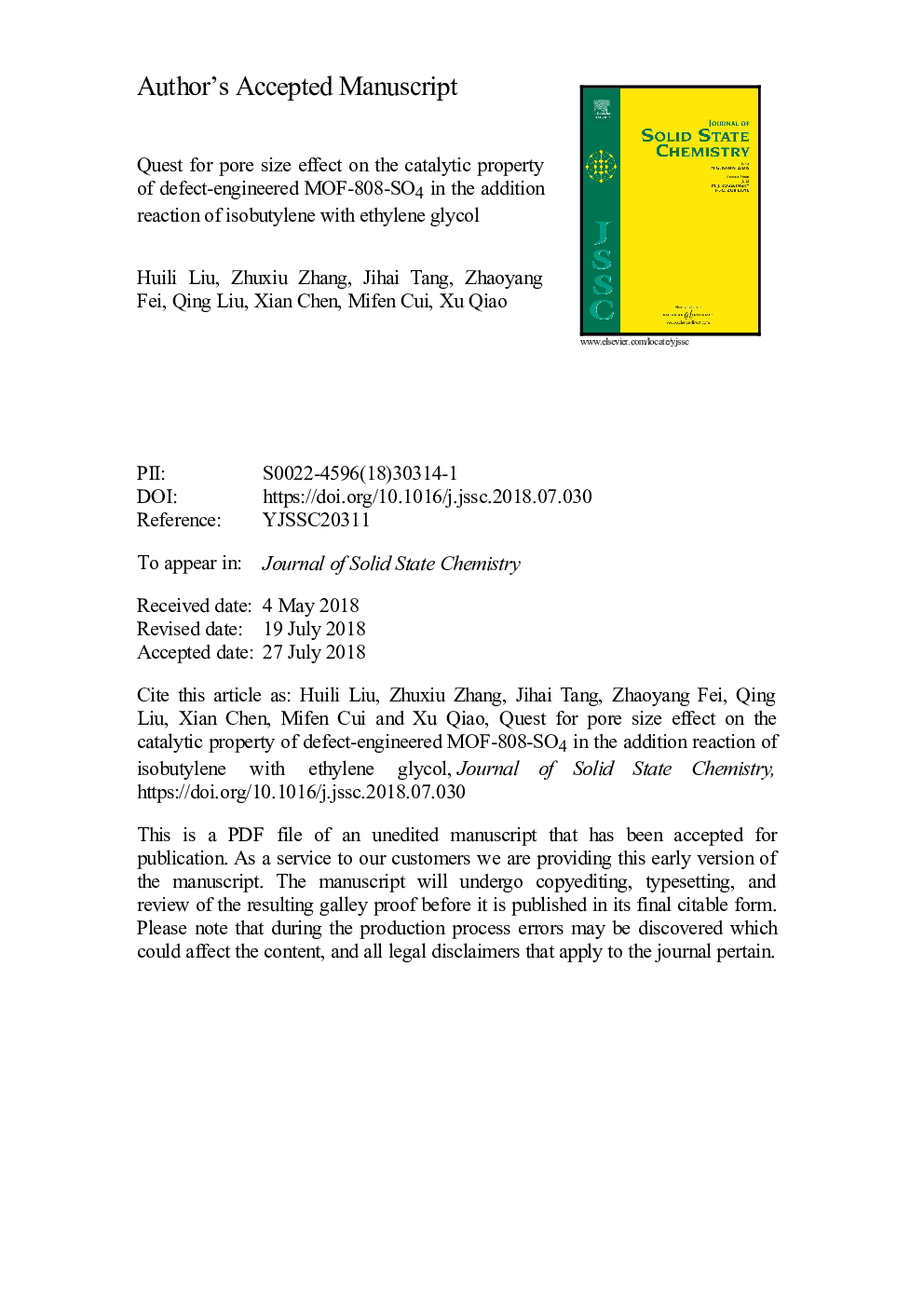| Article ID | Journal | Published Year | Pages | File Type |
|---|---|---|---|---|
| 10154807 | Journal of Solid State Chemistry | 2019 | 17 Pages |
Abstract
In this article, a series of defect-engineered MOF-808-SO4 were prepared in which 1,3-benzenedicarboxylic acid was used as the defective ligand. All catalysts were characterized by XRD, 1H NMR, TGA-DSC, N2 sorption isotherms and acid-base titration. 1H NMR confirms the existence of H2bdc in the framework of MOF-808. With the increase of defective ligand, the pore size of MOF-808-SO4 ranges from 1.46â¯nm to 2.25â¯nm. The effect of pore size on catalytic properties of MOF-808-SO4 was investigated in the addition reaction of isobutylene with ethylene glycol. Highest conversion of ethylene glycol reaches 100% over MOF-808-20%-SO4 with the largest pore size of 2.25â¯nm after 8â¯h at 100â¯Â°C. Small pore sizes exhibited by parent MOF-808-SO4 (1.82â¯nm) and MOF-808-10%-SO4 (1.53â¯nm) give rise to high selectivity above 90% after 12â¯h. MOF-808-15%-SO4 with pore size of 1.99â¯nm shows the highest yield of target product.260
Related Topics
Physical Sciences and Engineering
Chemistry
Inorganic Chemistry
Authors
Huili Liu, Zhuxiu Zhang, Jihai Tang, Zhaoyang Fei, Qing Liu, Xian Chen, Mifen Cui, Xu Qiao,
